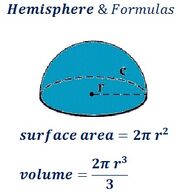Navigation
Install the app
How to install the app on iOS
Follow along with the video below to see how to install our site as a web app on your home screen.
Note: This feature may not be available in some browsers.
More options
-
This forum is strictly intended to be used by members of the VS Battles wiki. Please only register if you have an autoconfirmed account there, as otherwise your registration will be rejected. If you have already registered once, do not do so again, and contact Antvasima if you encounter any problems.
For instructions regarding the exact procedure to sign up to this forum, please click here. -
We need Patreon donations for this forum to have all of its running costs financially secured.
Community members who help us out will receive badges that give them several different benefits, including the removal of all advertisements in this forum, but donations from non-members are also extremely appreciated.
Please click here for further information, or here to directly visit our Patreon donations page. -
Please click here for information about a large petition to help children in need.
You are using an out of date browser. It may not display this or other websites correctly.
You should upgrade or use an alternative browser.
You should upgrade or use an alternative browser.
Planet Cracking
- Thread starter CNBA3
- Start date
-
- Tags
- attack potency
- 10,687
- 6,335
It has a lot of variables. The size and depth of the cracks and how they're made, for example.
- 3,886
- 351
- Thread starter
- #5
The method is the explosion breaking the crust 30 miles thick and explosion radius roughly 17 by 22 by 18 kmDarkanine said:It has a lot of variables. The size and depth of the cracks and how they're made, for example.
- 8,438
- 3,293
Wait, you say radius and then list theee values. I am confused. If it is a hemisphereic or sphereical crater it would only need one radius value. Also you give three dimensions, so even that would cover the height, length, and depth of a non-sphereical explosion, but none of those match the km conversion from 30 miles. I am a bit confused.
- 8,438
- 3,293
Well I'm not sure what is actually being described. If it is a sphereical explosion with a radius of 30 miles that could work. If it is a rectangle with the other dimensions that can also work.
If it is specificied as to what size this thing is then sure, go right on ahead.
If it is specificied as to what size this thing is then sure, go right on ahead.
- 3,886
- 351
- Thread starter
- #10
Apologies, I did not meant to add a third number value, the thickness remains at 30 milesAssaltwaffle said:Wait, you say radius and then list theee values. I am confused. If it is a hemisphereic or sphereical crater it would only need one radius value. Also you give three dimensions, so even that would cover the height, length, and depth of a non-sphereical explosion, but none of those match the km conversion from 30 miles. I am a bit confused.
- 8,438
- 3,293
Idk what when wrong there, but something definitely went wrong. That blast shouldn't be more than 1 Megaton (1,000 kilotons). Also, if the Earth was cracked by this, then we use Destruction, not explosions.
Edit: Wait nevermind. The explosion part is correct, but the the type of calc used isn't. You calced correctly, but I think calcing the hole in the crust is going to be better than calcing how much energy an explosion of that size would use.
Edit: Wait nevermind. The explosion part is correct, but the the type of calc used isn't. You calced correctly, but I think calcing the hole in the crust is going to be better than calcing how much energy an explosion of that size would use.
- 8,438
- 3,293
I mean he still hasn't clarified what shape this hole is and which value is the "third value" that is wrong.
I'd use hemisphere formula with 30 miles as the radius.
I'd use hemisphere formula with 30 miles as the radius.
- 729
- 19
Okay, if it turns out to be the hemispheric shape. Then using the formula for volume is the best?
https://ncalculators.com/area-volume/hemisphere-calculator.htm
https://ncalculators.com/area-volume/hemisphere-calculator.htm
- 8,438
- 3,293
Yes.
- 8,438
- 3,293
Why'd you divide by three at the end? A hemisphere's formula is just (2/3)xpixR^3. Using that formula I got 2.355x10^14 meters. You then covert cubic meters to cubic centimeters by adding six zeros, so total volume is 2.355x10^20 cc. Then we apply that to our destruction values. V-Frag is 69x, and Pulverization is 214.35.
The results would be 1.62x10^22 joules and 5.048x10^22 joules, respectively.
The results would be 1.62x10^22 joules and 5.048x10^22 joules, respectively.
- 8,438
- 3,293
I'm not sure why calculator soup has that /3, but it is wrong. Also I just round the 79 into 8.
- 8,438
- 3,293
Like I said before, if the number is 5 or higher, you can round up to add a 1 to the next digit. So 0.0015 can be turned into 0.002, or 0.1368 can turn into 0.137.
Similar threads
- Replies
- 11
- Views
- 1K
